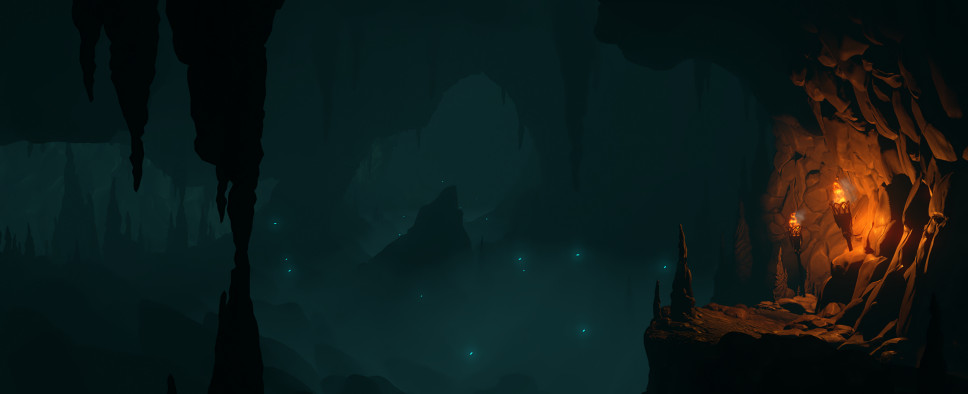Underworld Ascendant Development Update
-
Category: News ArchiveHits: 1410

A new development update for Otherside Entertainment's upcoming dungeon crawler Underworld Ascendant talks about the depth of environmental interactivity that game will have. It also announces that you'll be able to try all that interactivity out on August 10, 2017, when a Pre-Alpha build goes live for the backers of the Adventurer tier and above.
Apart from that, the update announces a developer roundtable livestream on August 16, and shows off a couple of pieces of concept art. An excerpt:
As you know, we recently stood up the core tenets of combat, stealth, and magic in an early area of the game called The Challenge of Ishtass. There, the player is first introduced to the array of choices available to them with The Improvisation Engine. We set the challenge, the solution is up to you, and we reward creativity.
Our recent milestone has been a key next step in inspiring and supporting player experimentation: turning the world into an interactive playground. The idea is that the systems that simulate this underground realm make sense. A wooden door can be burned down or chopped down, water can put out torches, physics act in logical fashion, and so on. So, when the player tests something out, they get expected results.
At its heart, this work has been about giving the player an abundance of options on how to equip their character and solve the challenge. We’ve expanded the playable area and added new skills and interactive elements. It’s intentionally designed to be replayed. We want players to experiment with different solutions and find what works best for them.
In terms of visuals, it demonstrates our visual style done to a fair extent of polish and now includes an initial pass at UI elements, but we will continue to iterate further on both during development. Current creature animations are not representative of the game’s visual target. This an important area we feel deserving of concentrated effort and we’ll be locking our sights on it in subsequent milestones. Also, usability of items, skills and interactive elements is another area that we’ll continue to hone and polish.
The reason that getting these core elements working clearly and well is absolutely essential is because it unlocks the magic sense of discovery the player gets from combining different systems together.
External playtesting is reliably eye-opening in this regard. For the choices people don’t make, as much as the ones they do. Teaching players that they have choice (like, no, seriously, here are your tools, surprise us), after decades of games where they haven’t, is a fun, interesting challenge.
[...]
The player might use a glue bulb and a crate to jam a trap, pass by unharmed, then use water to dissolve the glue, just as an enemy steps into the trap’s path.
Or they might cast a the Gravitate spell — a non-offensive magic originally designed as a way of creating bridges — on a pile of crates, setting them on fire, then to hold off encroaching enemies. Or, even better, lining them up just right and blasting them at enemies with a Repulse spell in a fiery rain.
It’s important to note that none of these results were planned in advance, they were discovered.
Whenever a new interactable element gets added to the game, all of us on the development team spend a few days playing around with it in conjunction with different skills, spells, and AI. Sometimes, we find bugs or areas where support is needed, but often, things just… work.
One of the most exciting aspects of external testing for us is seeing the inventive solutions that players come up with. We said back at the start that we want you to devise clever techniques that we haven’t imagined yet and every time we do a round of testing, we see a few things that we’ve never seen before.
For instance, one tester recently tossed a glue ball at the base of a whirring tick-tock trap right along the seam and stopped it dead in its tracks. We didn’t know that was possible, but of course, knowing how the systems work, it makes sense.
Another tester used the Gravitate spell to place and lock a crate right in front of the tick-tock trap’s whirring blades. It strained and strained against it, until the spell wore off and the crate was launched far into the air. (When it landed, it alerted a Lizard Man. Oops.)

